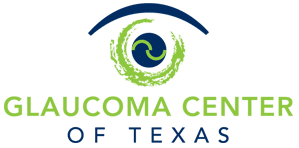Types of Glaucoma
POAG - Primary Open Angle Glaucoma
This is the most common form of glaucoma, is also known as chronic open-angle glaucoma, and is characterized by elevated intraocular pressure, optic nerve atrophy, and classic visual field defects.
Primary open-angle glaucoma is usually insidious in onset, slowly progressive, asymptomatic, and painless. By the time patients start noticing vision loss, the disease is typically in its severe stage. Though it is most commonly bilateral, it can be quite asymmetric, presenting sooner or affecting one eye more severely than the other. It is characterized by a classically open angle on gonioscopy.
Risk factors include elevated IOP, thin corneas, advanced age, race (African American & Hispanic), and a known family history of glaucoma. Treatment consists of lowering the IOP with drops, laser, or surgery.
Low Tension or Normal Tension Glaucoma (NTG)
Chronic Angle Closure Glaucoma (CACG)
Chronic Angle Closure Glaucoma is when the angle in the eye slowly becomes closed off over time with the development of scar tissue between the peripheral iris and the trabecular meshwork which physically blocks the drainage outflow. This is typically a slow and ongoing process that over time raises the IOP. Therefore, it often does not present with any symptoms, but as the IOP stays elevated it causes permanent damage to the optic nerve and permanent vision loss.
Patients with chronic angle closure are at risk for developing acute angle closure, where the angle suddenly becomes completely closed off, causing the IOP to be extremely elevated (40-60’s) and often presenting with pain, redness, and vision loss. Treatment consists of pressure lowering eye drops, laser peripheral iridotomy and sometimes surgery.
Acute Angle Closure
Acute Angle closure occurs when the drainage angle inside the eye becomes completely closed off and IOP very quickly becomes severely elevated, usually in the 40’s-60’s mmHg. Patients can present with eye pain or a headache on the affected side, eye redness, cloudy and hazy vision and sometimes even nausea and/or vomiting. Patients at increased risk for developing acute angle closure are typically farsighted, have narrow angles, a large or thick lens/cataract, and are of Asian or Inuit descent.
Having an acute attack of angle closure is a medical emergency and requires immediate attention and treatment. Treatment often consists of IOP lowering drops as well as a laser peripheral iridotomy, and sometimes surgery. Otherwise, it could lead to permanent vision loss
Secondary Glaucomas
Pseudoexfoliation Glaucoma
Pseudoexfoliation, or Exfoliation syndrome, is caused by an abnormal accumulation of protein in the drainage system and other structures of the eye. This abnormal protein and associated pigment block the outflow drainage canals, leading to a buildup of IOP and as a result, optic nerve damage.
Patients with pseudoexfoliative glaucoma typically develop higher pressures and faster disease progression than those with POAG. This type of glaucoma is more common in certain ethnic groups such as those from Northern Europe, Russia and the Mediterranean. Patients with this syndrome tend to require more aggressive treatment and careful monitoring.
Pigmentary Glaucoma
Pigment Dispersion Syndrome (PDS) occurs when pigment flakes off from the back of the iris, the colored part of the eye, into the clear fluid that fills the front of the eye. Over time the dispersed pigment starts blocking the drainage canals in the eye leading to elevated intraocular pressure (IOP). Once the IOP starts causing damage to the optic nerve and vision loss it becomes known as Pigmentary Glaucoma.
Pigment Dispersion Syndrome is more likely to occur in caucasian, nearsighted (myopic) individuals and Pigmentary Glaucoma is more likely to occur in males. Although rare, PDS and Pigmentary Glaucoma tend to occur at a younger age than POAG, often presenting in their 40’s.
There are certain classic findings that are seen on exam that are associated with PDS and they include a heavily pigmented trabecular meshwork (drainage angle of the eye), pigment deposits on the corneal endothelium (Krukenberg spindle), and peripheral iris transillumination defects. Treatment of Pigmentary Glaucoma is similar to POAG and can include drops, laser and surgery.
Neovascular Glaucoma
Neovascular Glaucoma is a type of secondary glaucoma that occurs when “new vessels” grow over and close the drainage angle of the eye leading to severely elevated intraocular pressures. This type of glaucoma usually occurs in patients with pre-existing retinal disease, weather from diabetic retinopathy or retinal vein/artery occlusions etc
